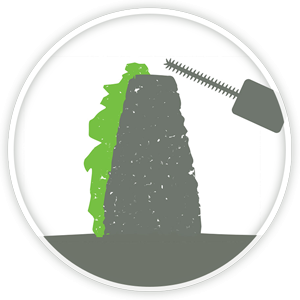Minimum impact, maximum results...
Tree Pruning
Melbourne's Tree Specialists
Expert Tree Pruning Services in Melbourne
A Blend of Art and Science
See all the tree prunning techniques we practice.
At Maggs Tree Services, we specialize in tree pruning services tailored to the unique needs of Melbourne's diverse tree species. Unlike general tree cutting services, we avoid harmful practices like lopping or topping. These outdated methods are frowned upon in modern arboriculture and can cause long-term damage to your trees. We believe in an approach that is aligned with the science of arboriculture and the specific needs of your landscape.
Our team of skilled arborists is not only trained in the latest tree pruning techniques but also adheres strictly to Australian Standards . We assess each tree's individual needs, considering factors like its species, age, and location, as well as your specific concerns and the overall aesthetics of your property. Whether it's managing overgrown branches, shaping the tree for a more appealing look, or ensuring your tree's safety and health, our approach is always thoughtful and precise.
For reliable and professional tree pruning in Melbourne, look no further. Contact Maggs Tree Services today, and let's discuss how we can enhance the beauty and health of your trees with our expert pruning services.
Our Tree Pruning Techniques

Crown Reduction
This process involves carefully shortening the branches and leaders to smaller, more suitable interior branches, effectively reducing the height, spread, and volume of the tree's canopy. Crown reduction is vital for controlling the size of the tree crown, managing weight distribution, and reducing stress on branches and stems, thereby enhancing the tree's natural structure and form.
Stand-alone trees, in particular, often develop extended, heavy branches optimized for photosynthesis but structurally unsound. Our Melbourne-based tree trimming and crown reduction services expertly 're-design' these trees, ensuring safer structures while maintaining their natural beauty.

Crown Lifting
This technique involves removing the lower branches of a tree to elevate the canopy. It's particularly beneficial for providing increased clearance over footpaths, driveways, and lawns. Additionally, crown lifting allows for more light penetration to gardens below, fostering a healthier and more vibrant undergrowth.
Our professional team in Melbourne expertly performs crown lifting to improve both the appearance and practicality of your outdoor space.

Crown Thinning
By carefully removing secondary branches from within the crown, we enhance light penetration for gardens beneath and improve the overall appearance of dense, unruly trees. Our experienced Melbourne arborists perform crown thinning with precision, ensuring that the tree retains a balanced and natural look without over-thinning or causing 'lion's tails', where only small tufts of foliage are left at the branch tips.
This method is ideal for maintaining tree health while fostering a more open, aesthetically pleasing canopy.

Crown Cleaning
This process involves meticulously removing dead branches, known as 'deadwood', and stubs resulting from previous damage or improper pruning. Crown cleaning is a critical step in maintaining the health and appearance of trees, often combined with other pruning techniques like crown thinning or lifting. However, some trees may require only this specific type of pruning.
Our skilled arborists are adept at identifying and safely removing these elements to preserve the tree's structural integrity and enhance its overall aesthetics.

Clearance Pruning
This process is crucial for providing necessary clearance around specific targets such as utility service wires, gutters, roof lines, or boundaries of neighbouring properties. Our expert arborists skillfully reduce or remove branches to ensure safe distances are maintained, preventing potential hazards and maintaining the integrity of nearby structures.
This service is essential for both residential and commercial properties in Melbourne, ensuring compliance with safety standards while preserving the natural beauty and health of the trees.

Selective Pruning
This method involves the careful removal of specific branches for a particular purpose, often tailored to meet the unique needs and preferences of our clients. While selective pruning is primarily focused on adapting a tree to fit a landscape's design or functional requirements, it can also contribute positively to the tree's overall structure and health.
Our professional arborists are adept at identifying and pruning the appropriate branches to achieve the desired outcome, ensuring both the tree's wellbeing and the client's satisfaction.

Formative Pruning
This approach involves carefully reducing or removing branches to correct or prevent structural defects, thereby encouraging a desirable form. Formative pruning is particularly crucial for juvenile trees, as it sets the foundation for their future growth and reduces the necessity for extensive pruning later.
By implementing formative pruning, our arborists ensure that young trees grow with a strong and aesthetically pleasing structure, significantly enhancing the health and appearance of your landscape.

Remedial Pruning
This method involves reducing or removing branches as needed to correct structural defects and establish a solid foundation for future growth. Typically applied to mature trees, remedial pruning is crucial for repairing damage caused by major failures from storms, mechanical damage, or the effects of previous poor pruning practices.
Our Melbourne-based arborists expertly perform remedial pruning to ensure the longevity and health of your trees, maintaining their structural integrity and aesthetic value.

Weight Reduction
This technique focuses on reducing the length of over-extended, end-heavy lateral branches in the canopy. Similar to crown reduction but more specific, weight reduction targets lateral branches without altering the height of the tree's upper canopy. This method is primarily used to improve safety by reducing the risk of branch failure.
Our expert arborists skillfully perform weight reduction pruning to ensure your trees are both aesthetically pleasing and structurally sound.

Hedge Cutting & Trimming
Initial formative pruning is essential in the first few years post-planting, typically conducted in winter or spring. Following this, regular maintenance trimming is needed, usually annually for informal hedges and biannually for formal hedges, with some requiring three trims a year.
For larger hedges, our Melbourne team uses electric or petrol hedge trimmers, along with scaffolding/ladders and precise alignment tools, ensuring a perfect trim every time.